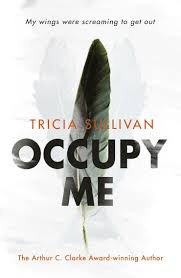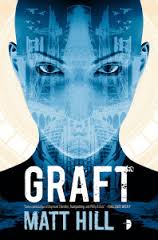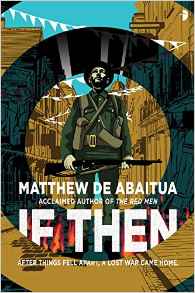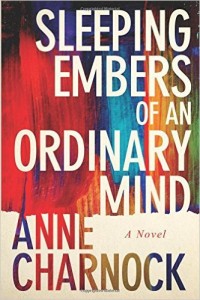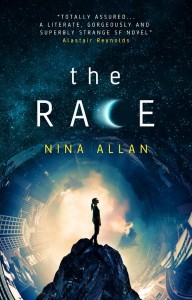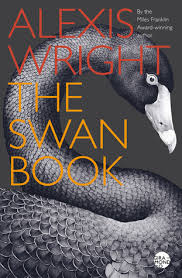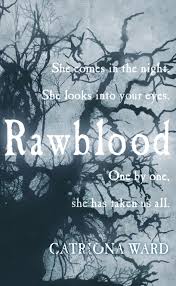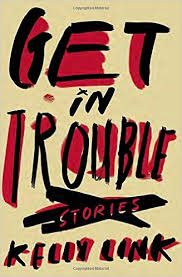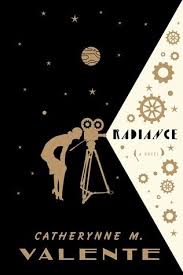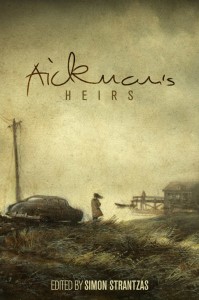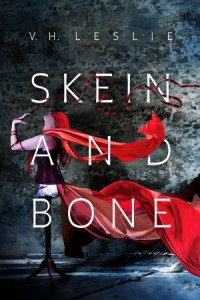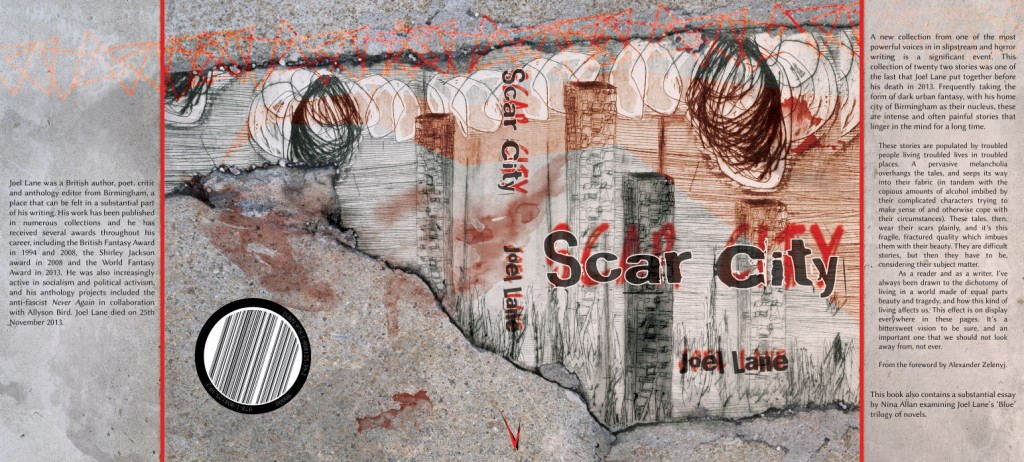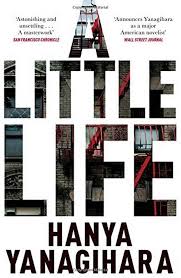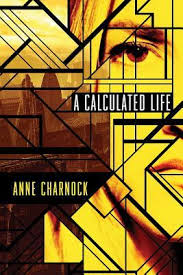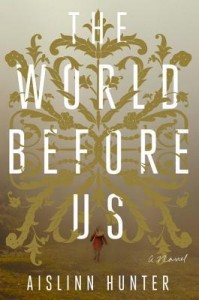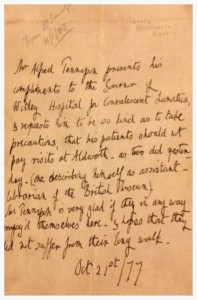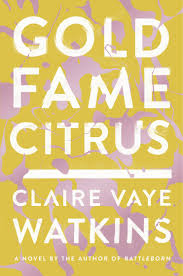 “I’ll fix it, I will. We’ll get the birth certificate, a clean ID. I’ll take care of everything.” That was what he’d been telling Ig, that he was going to get his shit together, that he’d be on top of every damn thing from here on out. Also how quickly one’s beliefs and values and principles and philosophies – all the biggies – could be reduced to a matter of paperwork. (p 60)
“I’ll fix it, I will. We’ll get the birth certificate, a clean ID. I’ll take care of everything.” That was what he’d been telling Ig, that he was going to get his shit together, that he’d be on top of every damn thing from here on out. Also how quickly one’s beliefs and values and principles and philosophies – all the biggies – could be reduced to a matter of paperwork. (p 60)
I began reading Gold Fame Citrus in the midst of a monster gale, Storm Imogen. We’re high up where we are, and the winds were strong enough to snap the arm off a nearby wind turbine. I wonder now if it was this – the sense of a landscape under assault, the sense that the weather could fly off into new normals, any time it wanted – that made me begin to change my attitude towards Watkins’s first novel.
I started out hating it – an ex-model named Luz trying on a mink coat in the blistering California heat while her ex-soldier boyfriend goes about the serious business of finding water – and wondering what on Earth Watkins could have been thinking, wanting to create a character like that – so lax, so ineffectual, so preoccupied with men’s desires – when she could have written Luz any way she chose.
Now I think I get it. She wrote Luz and Ray and their adopted daughter Ig because these are the people – the totally random people – her attention happened to fall upon. They could have been anyone – a grandmother with a career in the military behind her, a discredited scientist, a teenage runaway, a businessman run amok – but they’re Ray and Luz and Ig. We’re travelling with them because we just are.
The first thing I found myself loving was Luz’s dream-list about moving to Seattle, couched in language she probably wouldn’t have used (who would?) Too beautiful. Too writerly. But why not? Watkins is trying to convey something here, something that reaches past how characters ‘should’ be or how they should behave. Watkins doesn’t give a stuff about what she ‘should’ be writing. She writes as she writes, and I am drawn steadily deeper and deeper until I am caught.
“What the fuck?” said Ray. He pressed his foot to the felling thing and where he pressed the trunk collapsed, papery. Ig laughed like a hiccup. They investigated the broken stump and found it completely hollow, save for some dry, twiny marrow inside.
Luz pushed carefully on the trunk of another towering yucca and it too crumpled to the ground, setting Ig agiggle.
“They’re dead,” Luz said. “All of them.” Dead, without moisture enough to rot.
“The groundwater’s gone,” said Ray, though he promised he wouldn’t. (p 87)
Devastating and terrifying. One of the most astute novelistic commentaries on climate change I’ve read and an essential addition to this particular canon of speculative literature. I feel enraged at Luz for leaving the top off the gasoline, for being so careless. That Watkins picks up on this kind of detail is something I noted with pleasure even as I felt horrified by it. Luz is sorry, like she always is. She meant no harm. The difference in my impatience with Luz now from the impatience I felt with her at the start of the novel is that now I like her. I envy her compassion, her unselfishness, appreciate how vulnerable she is. I think I even understand her, at least a little.
The pages where Luz and Ray are running out of gas are arid, desolate, hopeless. Brilliant. I find am loving every page of this book by this point.
Scraping wind, five-hundred-year wind, the desert’s primal inhale raking the expired floodplain, making a wind tunnel of California’s Central Valley. In came particulate, swelling simultaneously Dumont Dunes and their southerly cousins, Kelso Dunes. In barely a blink of desertification’s encrusted eye, the two conjoined across the eighty miles that had long separated them, creating a vast dune field over one hundred miles wide, instantly the longest dune in North America. (p 118)
The red centre of the novel, the dune sea, like Hokusai’s wave, in a great arch, overreaching everything. Luz and Ray are separated: Luz to be rescued by Levi Zabriskie and his ‘family’, Ray, we find out later, to wander and to be beaten senseless (who by? You’ll find out), to be incarcerated for months in the underground Sangatte of the Limbo talc mine. There are strange legends – mole men, nuclear storage dumps, generations of unregistered Mojavs being born underground. Levi tells Luz the US government plans to nuke the whole area. What else are they to do with it? Luz thinks Ray is dead. She thinks Levi is a prophet. The language, in places, mimics the blurred, hallucinatory flow, the skewed ever-present tense of drug addiction. You came here for predictive science fiction? Fuck that bitch.
When Ray visited later that day, he visited a dingy solar-powered school bus in a madman’s colony, an outpost in the cruel tradition of outposts, peopled by prostitutes and loners and rejects and criminals and and liars, their sheriff a con and a thief and surely worse. (p 312.)
And so everything, in the end, comes back to the Spahn ranch, the lies, the seductions, the isolation. Was any of it even real?
Luz chooses for herself, finally, as she goes under. Ray soldiers on.
*
Claire Vaye Watkins’s first book was called Batteborn, a collection of stories exploring the brutal and unforgiving landscape of her native Nevada, together with the story that lurks in the background of her own family, the dark legend of Charles Manson and his groupies, the deadly fantasy world he constructed for them out at the Spahn movie ranch, a fantasy they finally, brutally inflicted on the people they killed. I loved that book, I thought it was exceptional. When I heard that Watkins was writing a near-future science fiction novel set in the same kind of landscape, I was extremely excited.
If I imagined anything going in, I suppose I was expecting something a little like Sandra Newman’s The Country of Ice Cream Star. Gold Fame Citrus is not like that novel, not in the least, though as speculative novels go I can see how they’re related through the importance they both ascribe to the role of language. But while Newman’s language serves her speculative conceit, Watkins’s undermines it. Constantly, determinedly. Ice Cream Star is a science fiction novel. Gold Fame Citrus exploits science fiction, but – searing commentary on environmental abuses and government cover-ups aside – it doesn’t give a damn about it.
Gold Fame Citrus is a novel affected by sunstroke. A hallucination. If it is about anything it is about the falsehoods and entrapments of communal folly, both in the private sphere and the political. About how one might wrestle free of such mental enslavement and what residual damage might exist, how it might still have the power to wreck lives and futures and thought processes long after it’s over.
I love the form this book takes: the wilful digressions, the embedded pamphlet, the theatrical interludes. I disagree totally with those reviewers who have suggested that this approach has sapped the energy of the central narrative. The central narrative is a tragedy, a predetermined sorrow. The accompanying threads of story are its Greek chorus. They’re also brilliantly compelling in their own right.
As a second work of fiction to follow Battleborn, I’d judge Gold Fame Citrus a step up in reach and ambition. Watkins has negotiated the leap to longer-length work with originality, dexterity, and equal intensity of focus. As story, the novel is scourging rather than satisfying because its sadness leaves us empty rather than full. As an exercise in the novel form, I would say it succeeds admirably, and with great inventiveness.
Where Watkins will go from here, it is impossible to guess.
(You can read an interview with Claire Vaye Watkins at Electric Literature here.)
